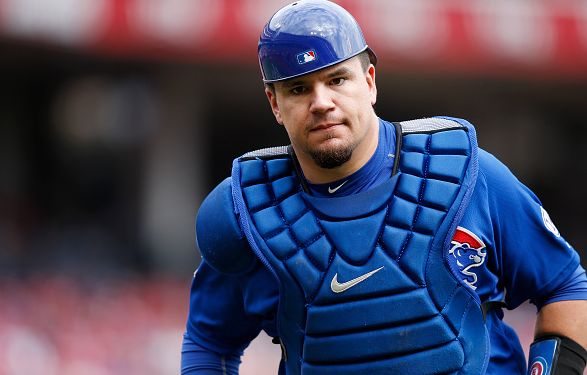2016 Fantasy Baseball: Waiver Wire — Catchers

So, you find yourself in the market for a catcher. If you are anything like me, you never dreamed you’d be in the market for a catcher this soon. Heck, you picked one early in the hopes that you could mark this position off your list, but life gets in the way sometimes. I watched Dexter Fowler collide into Kyle Scwarber live in real time. A part of me knew my catcher plans immediately went by the wayside. If you are anything like me, you wondering what you should do right now.
Picking players off waivers is a harsh reality at this point in the season, but seasons are won and lost based on how successful teams are at taking advantage of the waiver wire at the right time. If you were a Schwarber owner, now is the right time. For our waiver wire series, the rules are simple, a player has to be available in 90 percent of the leagues on both major platforms. That excludes players like Yadier Molina. He is available in more than half of the leagues (including my ESPN league), but we will leave him aside for the moment.
Doing the research takes some time, but it can be rewarding in the end. What you want is a player that will be a credit to your team in as many categories as possible. What we have done is take the 31 regular catchers (including Schwarber) and looked at the median score for the six statistical categories used by most leagues. If you play in a standard five category league, you can ignore walks. We went back four seasons on all current regular catchers and took their four year average (sometimes less for more recent regulars). They included some partial seasons, so the numbers will skew low, but we will see that across the board at all the positions.
| AVG | HR | Runs | RBI | SB | BB |
| .250 | 9 | 37 | 43 | 1 | 26 |
Keep in mind that several of the seasons in question had the catcher as a part-time player. If we were to extrapolate these numbers over 400 or 450 at bats, then we would see something different. That being said, the first thing we should do is take each player’s average in each of the categories and compare it to the median score above. The median score would represent the 16th best catcher in each category. If a player exceeds the average more often than not, then he probably qualifies as a borderline regular catcher. That’s as good as it gets after the draft.
| Yahoo | ESPN | AVG | HR | Runs | RBI | SB | BB | |
| James McCann | 10% | 6.2% | + | – | – | – | – | – |
| A.J. Pierzynski | 5% | 3.4% | + | + | + | + | – | – |
| Jason Castro | 4% | 2.2% | – | + | + | M | M | + |
| Chris Iannetta | 6% | 3.5 | – | M | – | – | + | + |
| Kurt Suzuki | 2% | 1.0% | – | – | – | + | + | M |
The symbols are pretty simple. If a player’s average is better than the median, then he is a plus in that category. If he is worse than the median, then he is a minus player. Players with Ms were the median at the position. The general idea is that depending on the position, all five categories are in play. Chasing a particular category can seem like a good idea, but at this point, anyone that is superior in any particular category is probably already off the board. For catchers, we can probably ignore stolen bases, and if you have a five category league you can ignore walks.
McCann has the advantage of being a full-time catcher, but his power and run production is below average. If he hits like last year, he won’t kill your batting average, but that is the only thing he really brings to the table. In six category leagues he is also a drag. Even though he is owned by more players than the other guys, he is probably not the best choice on the board.
Pierzynski is clearly the best choice in five category leagues. Yes, he has no speed, but how many steals are you really looking to get out of your catcher? The median for steals was one. Meanwhile, Pierzynski carries a better average than most catchers and is pretty close to the median in power and run production. In other words, he really doesn’t hurt you anywhere. In six category leagues he’s a little more problematic.
Castro is probably the best option in six category leagues. The only category where he is really a drag is in batting average. He isn’t going to be a world beater, but what are your choices at this point? He walks more than most catchers and he has hit double digit home runs three seasons in a row. There is a lot to like here.
Once upon a time, Chris Iannetta was a very productive catcher. Of course, most of those seasons came in Colorado where ordinary hitters look really stout. Iannetta’s best attribute is his ability to draw walks and that doesn’t count in most leagues. Still, he produces close to the median in every statistical category except batting average, so you can probably stay afloat with him.
Suzuki has seemingly been around forever, but he is still only 32-years- old. That’s old in catcher years, though. Once upon a time, Suzuki had double digit home run power, but that seems like an eternity ago. His career batting average is near the median and he will produce close to median numbers in runs and RBI assuming he plays regularly. He’s also a decent choice in six category leagues.
You can see there are plenty of decent choices for saddened Schwarber owners. None will give you elite performance like you were hoping for from Schwarber, but most of them will keep you afloat. At this point, that is the best you can hope for and really all you should be looking for from a waiver wire claim.
Author’s Note: The original version of this article included Robinson Chirinos in place of Chris Iannetta. Chirinos is now on the disabled list for approximately two months, so he was replaced by Iannetta.



1 Comment
One day after seeing the article published, both Robinson Chirinos and James McCann have been added to the disabled list. I corrected the absence of Chirinos, but since McCann will likely not be down as long I will leave him in the article. Just note that he will be unavailable for action likely through the end of the month.